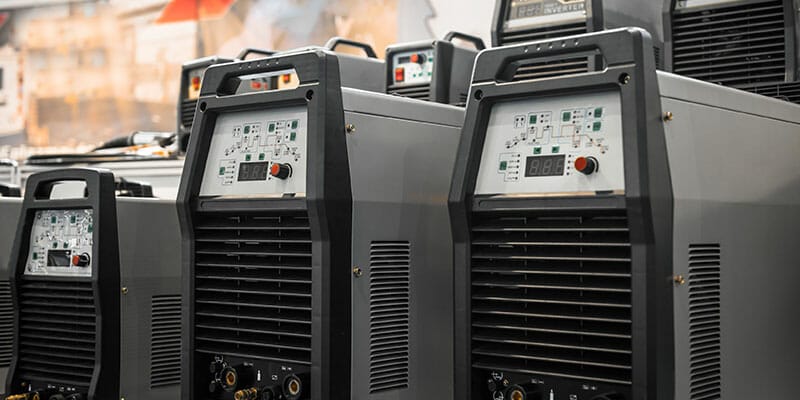- Home
- About us
- Products
- Dealer Enquiry
- Contact Us
- 044 -2486 1994
- +91 99623 98222
- sales@nantech.in
- REQUEST A QUOTE

Every individual in the entire world today is connected through the internet. Continuous technological innovations are bringing the world closer and closer. Power is the basis to keep this technological development working. Therefore, it is important to address the power failure issue with a suitable inverter. We have consolidated all the information that one should know before reaching out to a professional inverter battery manufacturer like Nantech power systems in Chennai. Keep reading about the various types of inverters, how they work, and aftercare procedures.
Inverters turn on various electrical devices even when the main supply is switched off. During power failure, they are emergency backups and convert direct current (DC) to alternating current (AC). The DC or direct current is created from either a solar panel or battery, which is converted into a 110/220 V alternating current and supplied to electrical appliances. DC is converted to AC because direct current can't travel for long distances. Every electrical equipment in a building will run on an AC current from the main power supply. Another advantage of AC is that it can experience both rise and fall and change its direction periodically, whereas DC can flow only in one direction. The voltage also reverses periodically in an AC circuit whenever the current changes direction.
How do Inverters Work?
Inverters store electricity in the form of DC in their batteries. When the power fails, the inverter starts to convert the DC to AC by passing it through a transformer. The change in voltage output instantly happens to resume the supply of electricity. Thus, as the direct current passes in an inverter, a series of switches turn on and off continuously and start stepping up with the help of a transformer. Then the switches alternate the DC signal's direction to create a sustainable AC voltage. Eventually, the electrical appliances gain a power supply even when the main power is shutdown.
Types of Inverters
Type of Load
Inverters are classified based on the output waveform and the load. Based on the type of load, the two main types of inverters are:
Type of Output Waveform
Depending on the output waveform, there are three classifications in inverters. They are:
The battery is the workhouse and backbone of an inverter. The life, performance, and efficiency of an inverter solely depend on the quality of the battery. The battery is the heart of the entire inverter system to determine the backup time. A good quality battery will offer the best solution during power failure and ensure low maintenance along with high reliability. There are three types of batteries used in an inverter, and they differ based on the technology to store the current. By knowing them in detail, you will be able to choose the right one for your usage.
Flat Plate Battery
Flat plate batteries have two electrodes and are commonly referred to as lead-acid batteries. The electrodes are immersed in water and sulphuric acid, an electrolytic solution. The positive electrode contains a lead oxide, whereas the negative electrode is made of porous lead. Flat plate batteries are lightweight and cost between nine to fifteen thousand Indian rupees. These batteries need regular maintenance, which is a major disadvantage. Therefore, tubular batteries have replaced flat plate batteries in recent times.
Tubular Battery
Tubular batteries are seen to last for a longer duration than flat plate batteries. They have a life of five years and are very efficient with less maintenance. The deep charging cycles enable these batteries to perform with greater efficiency. Tubular batteries need fewer water top -ups and are more reliable compared to the flat plate battery. However, tubular batteries cost more than flat plate batteries and are available between nine to twenty-five thousand Indian rupees.
Sealed Maintenance-Free Battery
A sealed maintenance-free battery is also known as valve regulated lead acid battery or VRLA. The reason why many prefer a VRLA battery is that it requires no maintenance. There is no need to replenish the electrodes with distilled water, and they are very safe for usage as they do not give out obnoxious gases. But the sealed maintenance-free battery is very expensive compared to tubular and flat plate batteries. The disadvantage of these batteries is that they have a shorter life.
If you are confused about choosing the right inverter, the points mentioned below will help.
The Bottom-line
With the above details, you would have understood all that you need to know about inverters. Now you can easily purchase the right one that suits your requirements and demands. However, make an effort to identify the inverter that will be perfect for daily usage and carefully look into its maintenance criteria before purchasing. Reach out to Nantech Power Systems, the pioneers in manufacturing inverters for commercial and domestic usage. We are the only inverter battery manufacturer in Chennai to deliver products with extended maintenance-free services.
Everything You Need To Know About Tubular Batteries
Inverter Batteries: What Should You Know Before Getting One?
A Comprehensive Comparison Guide To SMF Batteries
A Head-to-head Comparison Between Flat Plate & Tubular Batteries
Why Do Inverter Batteries Die So Soon?
Replace a UPS Battery or Buy a New UPS System?
A Closer Look at Solar Inverter vs Normal Inverter